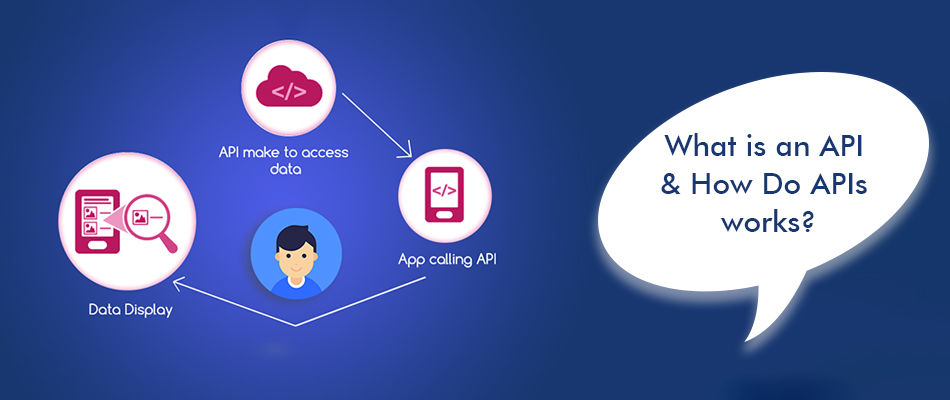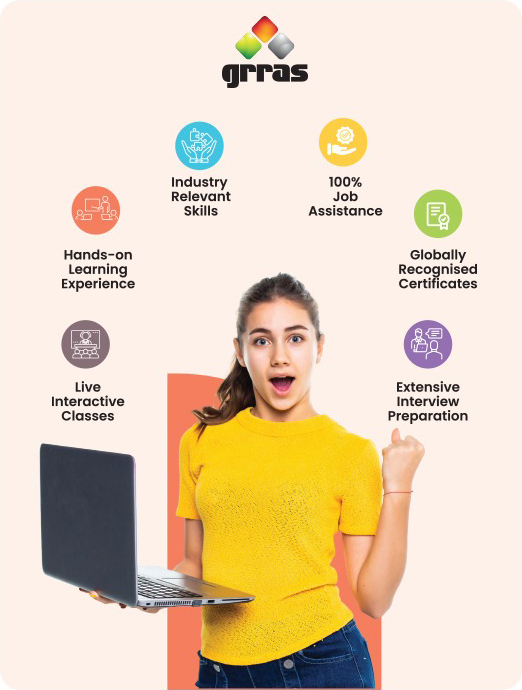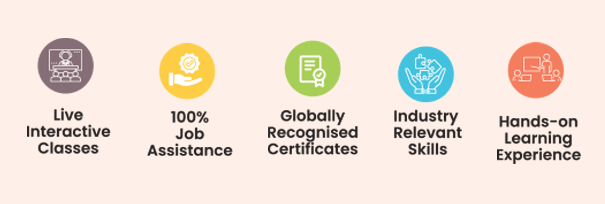We are living in a world that is rapidly moving in the direction of distributed systems. With the rise in the popularity of ubiquitous networking, the need for sharing resources, software, and data across various applications has come forth. This need is also directly related to being shared without any hindrance in the privacy. A layer of abstraction also needs to be maintained to ensure it is easy to use and universally understandable at all times.
This is exactly what we get via APIs!
While you will have to begin your training and certification program to get to know everything about APIs in detail, this blog will also give you a brief about it all. Want to know what is an API and how do APIs work? Our blog has you covered. Let us begin to unveil aspects of it one by one.
What is an API?
You have come to the right place to learn about APIs. API is an acronym that stands for Application Programming Interface. In the simplest of words, it is a software intermediary, with the aid of which two applications talk to one another. A software uses this software to communicate with another software and even other hardware.
Thus, we can say that it works as a bridge between two devices and software. With the changing times, API has become the backbone a wide variety of services that we rely on today.
Once a developer begins their coding process, they do not start from scratch because of the reusability of APIs. With the aid of APIs, developers can make repetitive process that are still complex in nature. Thus, the process of application development gets sped up.
There is a noticeable IT delivery gap today. IT delivery gap refers to the consistently growing gap between the needs felt by the business leaders and what is being delivered by the IT teams in lines with it. this is where API reuse comes into the picture. It equips the developer to scale deliveries so as to close the gap between the business needs and the IT delivery gap.
Where do we Find APIs’ Usage?
So, the main question that we come down to is where do we find APIs’ usage? Well, in lots and lots and lots of places actually. Here are some of the top things an API is used for –
- APIs are behind the running of most web applications
- APIs are the incorporations for multiple no code solutions
- APIs aid in defining the networks as well as the information passed between devices, systems, and applications
- APIs are behind powering desktop applications
- Mobile applications are made possible due to APIs
- Everyday things such as wearable devices, automobiles, doorbells, etc are connected via APIs
- APIs help in connecting devices to the internet
Why are APIs being Used?
There are an abundant of reasons as to why are APIs being used. To truly bring to you the benefits, we have accumulated a list as conveyed to us by experts and professionals. Developers have found a multitude of reasons to use APIs and here are some you should know about.
- Integration with External & Internal Systems – Integrating one system with another is one of the key reasons why developers use APIs.
- Enhancing or Adding Functionality for Customers – In most cases, it is about improving customer experience as well as helping them execute better interaction with the organization.
- Reducing Operational Costs – APIs are known to reduce operational costs in various ways such as perform various functions that otherwise may have been done by humans. These tasks may include miscellaneous tasks such as abstracting data or sending emails.
- Improving System & Software Testing – APIs help achieve this by aiding quality engineering teams in separating tests for frontend components from the tests that are there for backend components.
- Enabling Mobile Applications – Various mobile applications are dependent on APIs for delivering important information to the mobile users.
- Enhancing or Adding Functionality of External & Internal Systems – This comes in handy for companies to manage both the inside and the outside tasks.
- Speeding up System & Software Development – With APIs, developers are facilitates to deliver and code functionality as microservices. Since big, monolithic applications get broken up, the process speeds up incredibly.
- Reducing Software Development Costs – Since APIs allows developers to build reusable components, the overall software development costs goes down significantly.
- Improving Organizational Governance & Security – APIs have been known to be used to automate and enforce corporate policies and rules.
- Reducing Non-performance and Outages Systems – Companies may use APIs for identifying problems within certain lines and recommend fixes for it.
How do APIs Work?
Working of APIs is pretty straightforward. They work by sharing information and data between devices, systems, and applications. Thus, we can say that an API facilitates these to talk with one another.
Let’s take an example to understand it better. Suppose a customer is telling the waiter about what he wants. The waiter in return notes down the order and gets it across to the kitchen. The kitchen then begins to prepare his order, and with the aid of the waiter the food gets delivered to the customer.
In the said scenario, the customer is the user, the waiter is the API, and the kitchen is like the server. With APIs being the waiter, the translation of the orders become super easy and gets done with mor efficiency.
What are the Different Kinds of APIs?
There are tons of different kinds of APIs. Not only this, there are also various ways of categorizing them. While getting across information on all of them is not possible, here are some of the most common ones.
One way we can categorize APIs is by segregating them on the basis of who has access to them. Via this, we get three branches.
- Internal APIs – APIs that can be accessed only by a company, organization, team, or department. These are also referred to as private APIs.
- External APIs – APIs that are available for everyone to use are called external APIs. These are also called open APIs or public APIs. However, do not confuse them with OpenAPI!
- Partner APIs – APIs that are private in nature and are shared with specific partners only outside of the organization are called partner APIs.
Another way of categorizing APIs is via their architectural styles. There are quite a lot of different architectural styles out there. With this blog, we are going to cover the most popular styles to know about.
- REST API – REST is an acronym that stands for REpresentational State Transfer. Such APIs are dependent on a few guiding principles including stateless operations, uniform interfaces to communicate throughout systems, client-server structure, etc.
- SOAP API – SOAP is an acronym that stands for Simple Object Access Protocol. Such APIs are more formalized and structured that other APIs. And while they can be slower as compared to others, they are definitely more trusted and reliable.
- WebSocket API – such APIs are dependent on the WebSocket computer communications protocol. This is a complete duplex communication channel across a single TCP connection. WebSocket APIs offers a standard way to the servers to send data and information to clients, even when it is not requested by the client.
- Server-sent event API – Also referred to as SSE, Server-Sent Events is a technology that is dependent on the data that is pushed from the server. Thus, the client automatically receives updates via a HTTP connection.
- MQTT APIs – This abbreviation is short for Message Queuing Telemetry Transport. Since it is extremely lightweight, it is said to be best fit for IoT or the internet of things. With MQTT, subscribing or publishing messages become easier for the devices.
- Webhooks – Webhooks are event-based. In simpler words, these are automated messages that are sent from one system to the other in the case of an event occurrence. Webhooks are also widely referred to as reverse APIs.
- GraphQL API – GraphQL is an acronym that stands for Graph Query Language. This language is a depiction of how information is asked from an API by another API. While it was created by Facebook in 2012, it was publicly released as an open-source language for APIs in 2015.
- gRPC API – Having originated by Google, the RPC in the name is short for Remote Procedure Call.
- AMQP API – AMQP is again an abbreviation that stands for Advanced Message Queuing Protocol. This protocol works at the application later and follows open standards. It is known to be the best fit for message-oriented middleware.
Conclusion
There is a lot more to know about APIs. But it is not possible to get all the points covered and conveyed in this blog. However, once you begin your journey with Grras Solutions, you will find yourself learning a vast amount of knowledge and skills. Become a part of Grras Solutions today and begin your success journey now.






